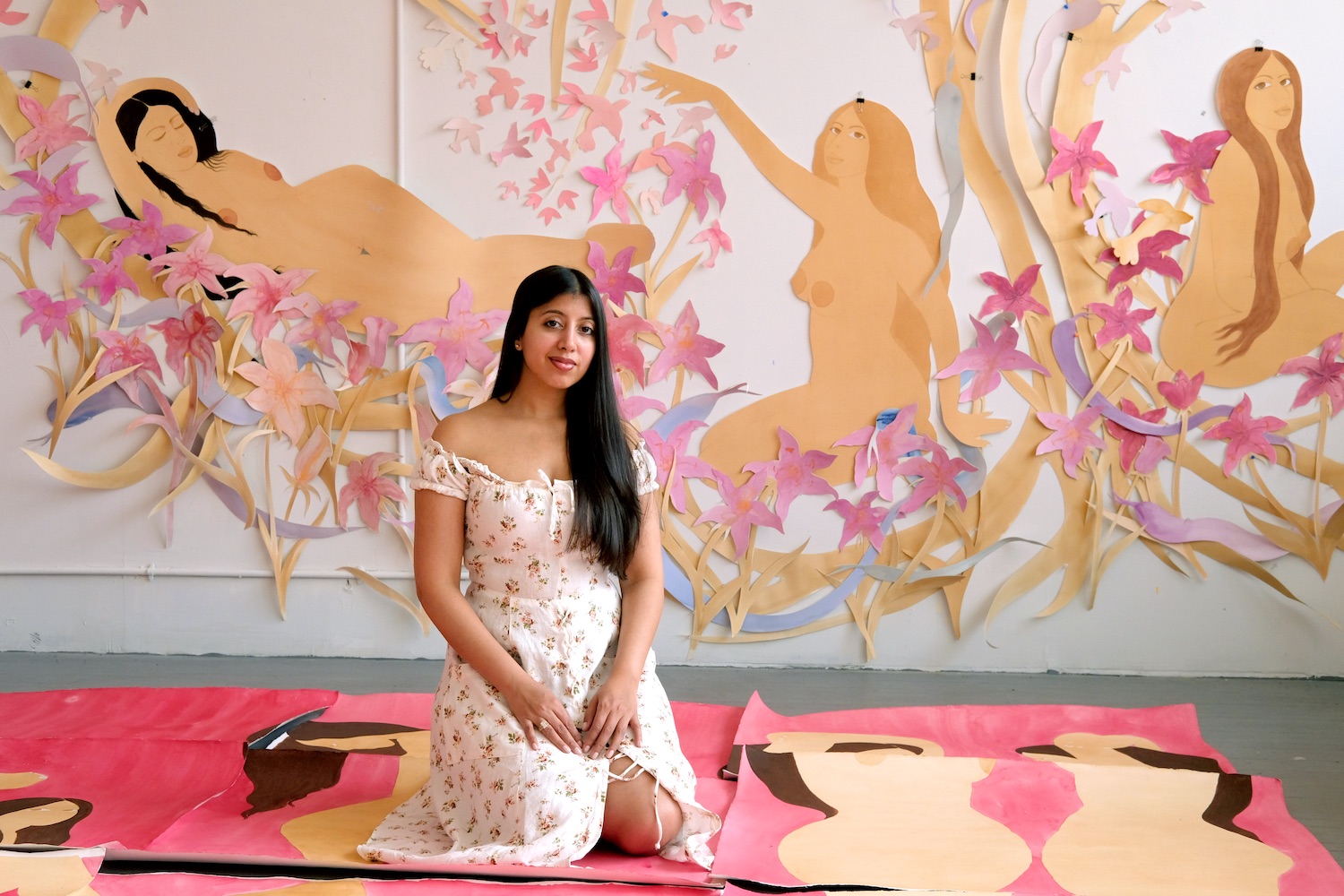This spring, Qinwen Wang, along with curator Sun Bohan, produced the world’s first crypto art exhibition, held at UCCA in Beijing and later traveling to Shanghai. The show, “Virtual Niche: Have You Ever Seen Memes in the Mirror?” was hosted and curated by BlockCreateArt (BCA) with Digital Finance Group and Winkrypto, with funding by Bitmain and help from AndArt Agency.
“Virtual Niche” tells the story of the next medium in art, NFTs, from the beginning of blockchain to record sales by artists like Beeple. Works by Robert Alice, deadmau5 and Mad Dog Jones, Tiger Cai, Pak, Ellwood, and more were featured to showcase the dialogue and connection between institutional fine art and digital native communities.
Whitewall spoke with Wang—an expert in the art and tech movement working with Web3 Foundation and Polkadot Network—about digital art’s place within the art market.
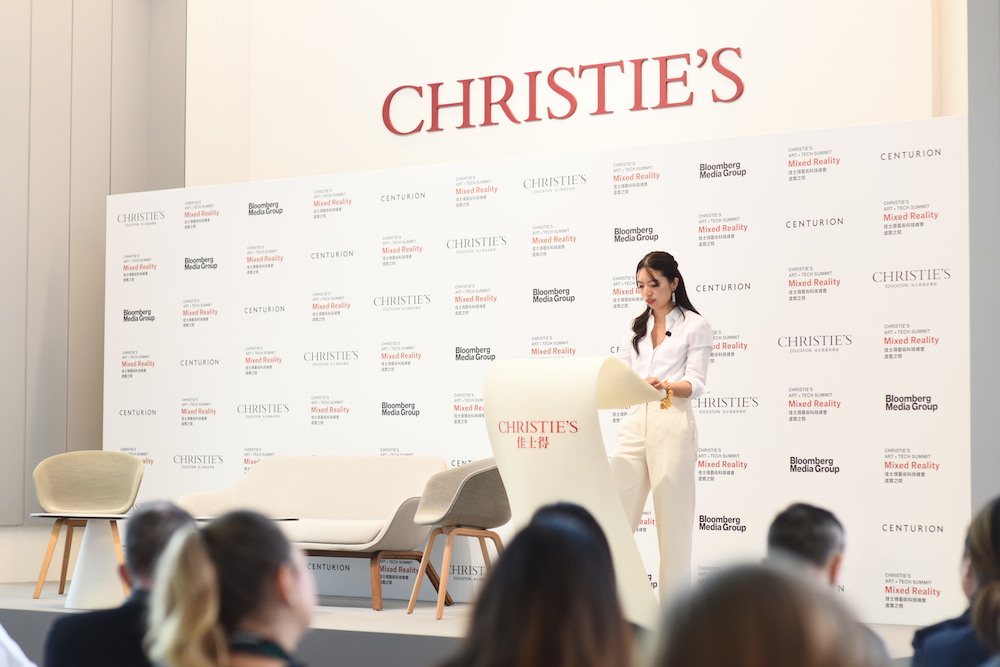
Portrait courtesy of Qinwen Wang.
WHITEWALL: Have art and tech always connected for you?
QINWEN WANG: These are both industries I love and know so much about, and this is where the world is heading. Every one of us is spending more time on screens and phones. The way we create art, share, and experiences is going to be different. Ethereum, blockchain, bitcoin—these are creations built from the language of coding. And now we are using code as the new tool to create art. When I look at crypto, it’s just a new form of art.
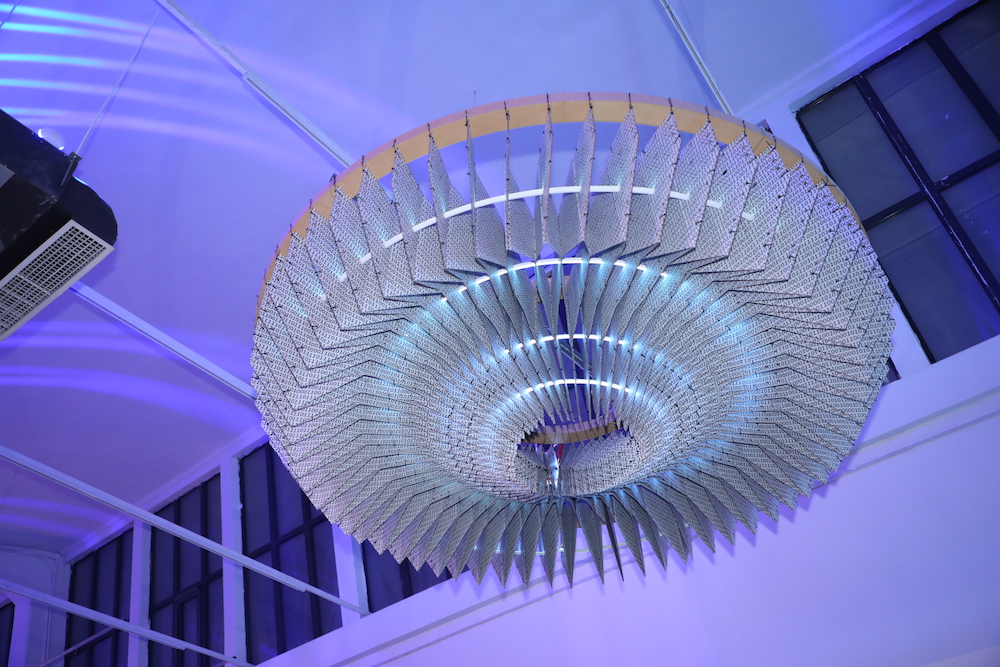
Lighting installation by Niko Edwards, , courtesy of the artist and UCCA.
WW: What made you want to create an in-person, rather than digital, exhibition like “Virtual Niche”?
QW: Sun Bohan and I, we wanted more people to learn about it and also get real people connected. Everything started from last October. We met during the art fair in Shanghai, then one thing leads to another. We made it happen. We are very glad we did it at UCCA.
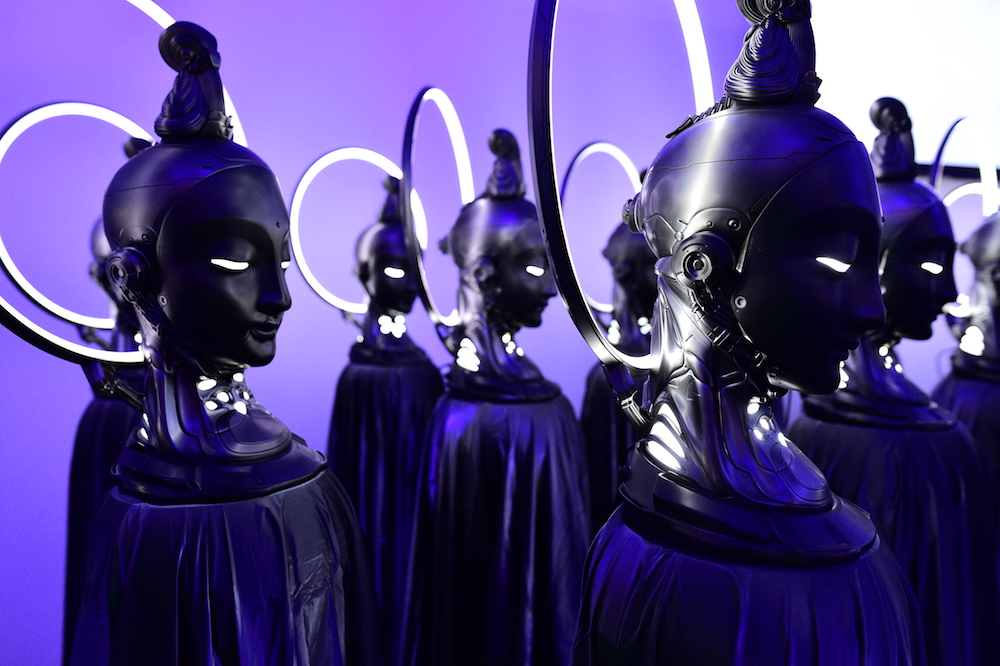
Installation view of DABEIYUZHOU, Future Fo, 2020, courtesy of the artist and UCCA.
WW: How did you want to present the work and the artists?
QW: From my perspective, it’s such a celebration for our crypto world in general. From the blockchain community, we have a few major key stories. One is the bitcoin story. You will find a whole wall of a mining machine, which is sponsored by Bitmain, the largest mining company in the world from China. If you’re a non-crypto person, you walk in with the curation; you understand how it works, the beauty of it.
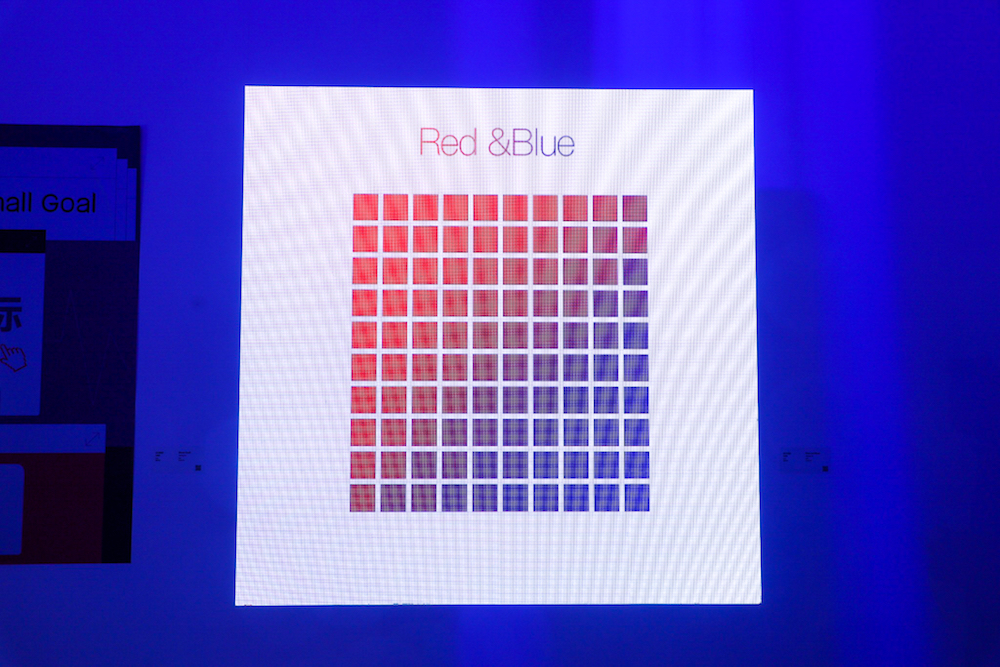
Jiaying Liu, “Red and Blue,” 2019, Crypto Art, courtesy to the artist and CryptoZR.
Beside this mining machine installation, you will find the Portrait of a Mind, a major piece that’s the first physical NFT art sold in Christie’s by Robert Alice. On the surface you see all the source code embedded. And we have a wall at UCCA with all the decentralized community key words. Then we have a special sector highlighting Polka Dot Community. Six of the works are actually from our art competition we cohost with BCA.
Technology-wise, you will see not only the blockchain but the generative art representing AI and also 3-D printing. Mario Klingemann is the first AI artist sold in Sotheby’s. I was lucky to acquire his work two years ago in Switzerland. His work is also one of the highlights. Then you will find major pieces in this NFT space with names like Beeple, and pieces from SuperRare and Opensea, the top 10 artists from the big platforms.
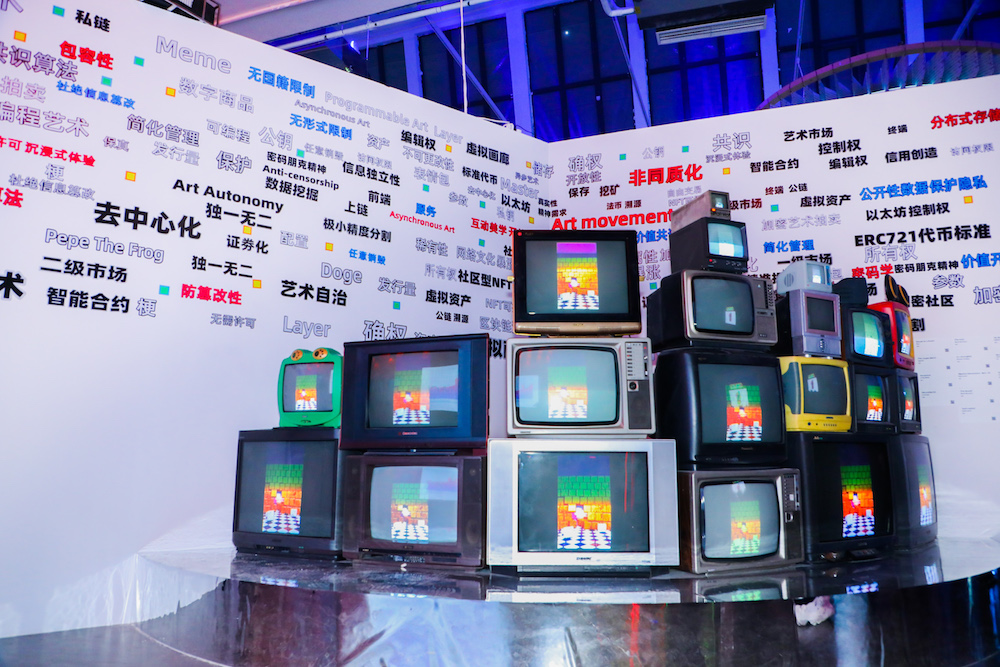
Installation of “Virtual Niche,” 2021, Crypto TV Tree, courtesy to UCCA.
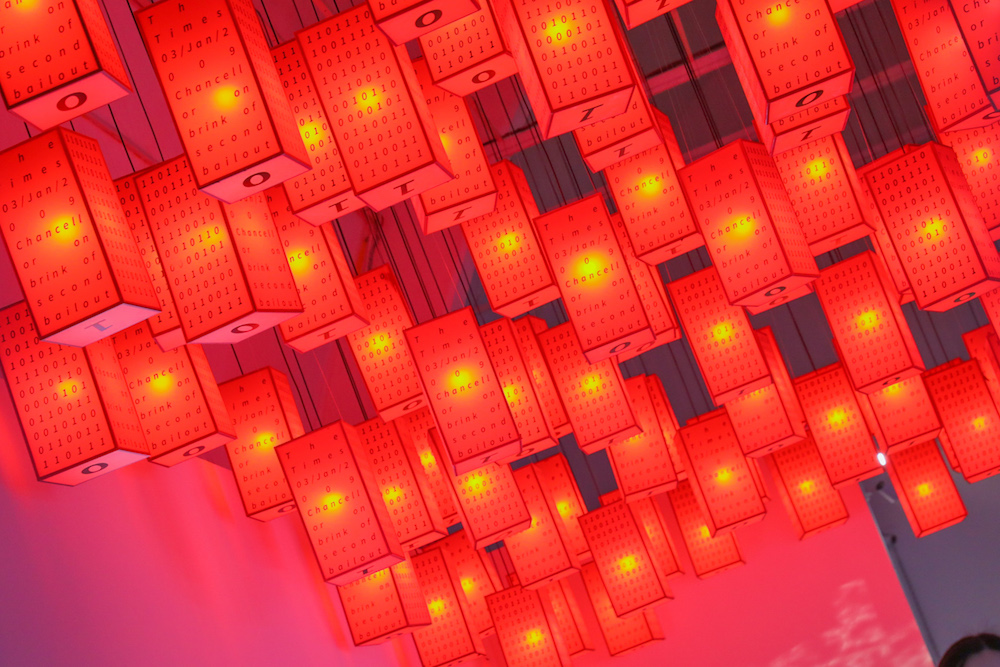
Lighting design by Niko Edwards, courtesy of the artist and UCCA.
WW: How do you see digital art in connection to the traditional art market?
QW: If we go back in history—the Medici family, Guggenheim, Rockefeller— these are the names associated with finance disruption. New banking, wealth from oil, and each of them made contributions into the arts. They are the finance disruptors and the tastemakers of their time.
Right now, we have a new Internet money, bitcoin, the new decentralized capital class making their taste. They chose pieces like crypto art because many of them are developers. They appreciate the programmable art or the very crypto native thinking of the art. They are the inventor and the owner of the new money. The finance disruptors have the new power and the new taste.
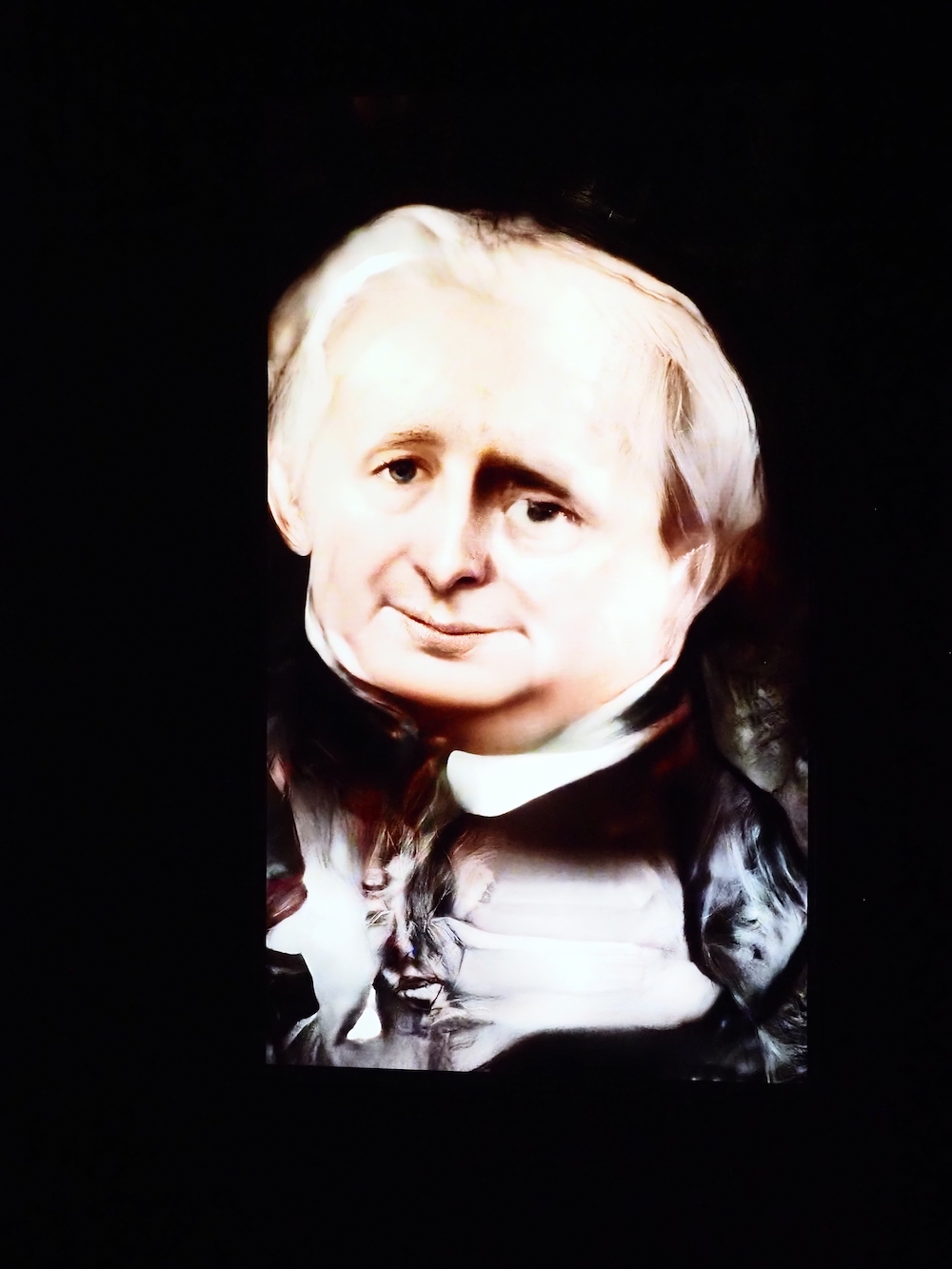
Mario Klingemann, “79530,” 2018, self portrait installations, courtesy to the artist and UCCA.
WW: How do you see this opening up new ways for collectors to connect with artists and vice versa?
QW: I think it’s a very beneficial thing. The Internet can bring connectivity and accessibility. When we mention NFT, the most important thing is it makes artists’ lives easier with smart contracts. Every single person has the chance to support young artists. Many people feel like they are not privileged enough or aren’t art savvy enough to go into art institution platforms. When we talk about the democratization of the art, it not only means we have accessibility, but also about the cultural recognition. And you can collect digitally without having to do all the transportation, et cetera. The crypto people have the culture and confidence, and artists can have more revenue sources through the resale rights.
We’re really talking about art democratization, how art and tech can change people’s lives. I’ve benefited so much from both, I want to share more with the people how beautiful technology and art is. Big things start small.
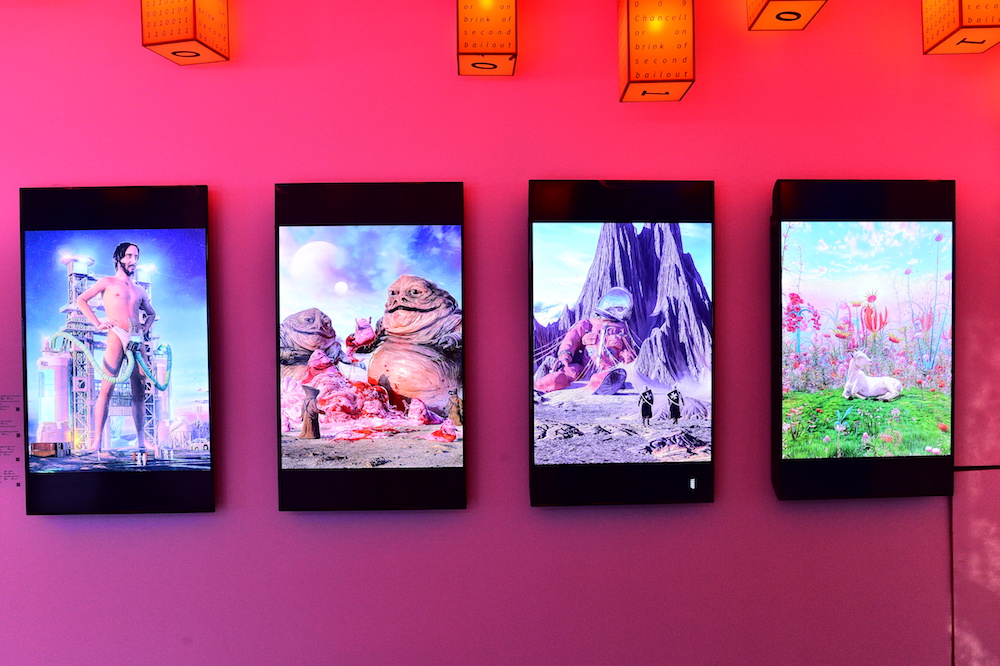
Beeple, “MARK OF THE BEAST,” 2020, Digital Painting, courtesy to the artist and UCCA.






